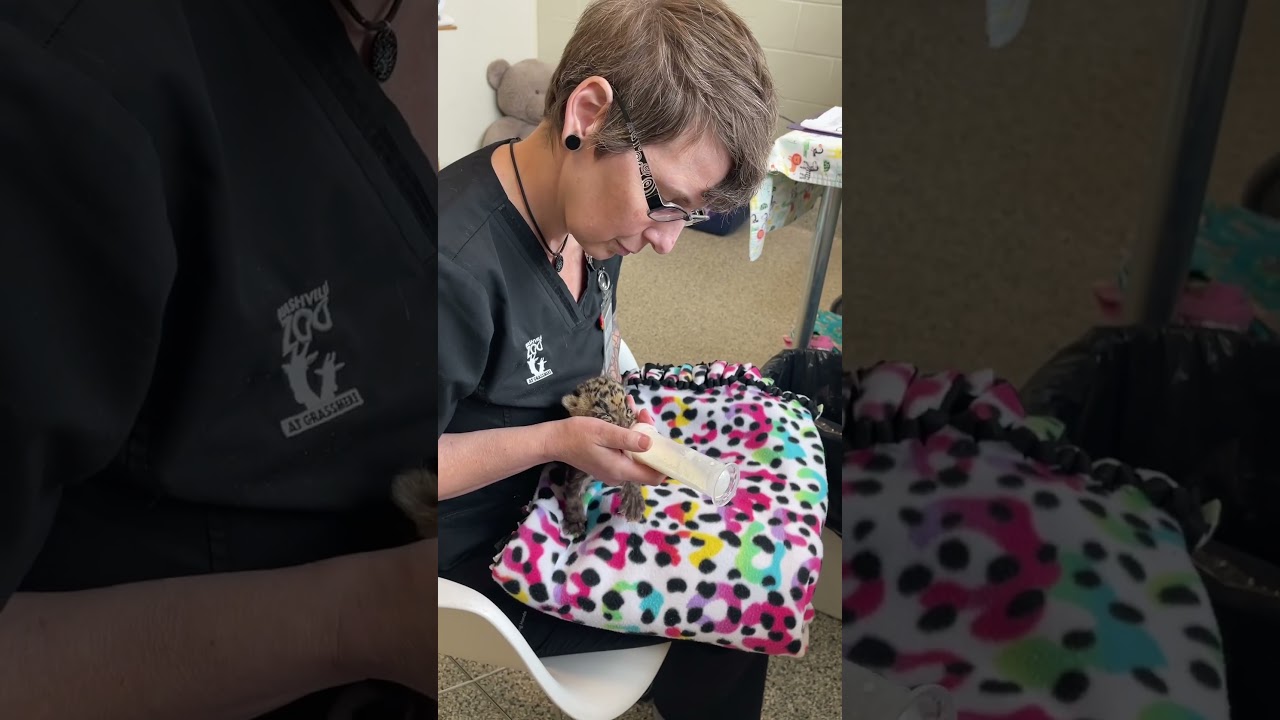- Understanding the specific needs and behaviors of baby clouded leopards, including their unique digestive systems and specific care requirements.
- The role of burping in maintaining the health and comfort of baby clouded leopards in captivity and how zoo professionals apply this knowledge.
- The importance of creating appropriate environments and diets in zoo management to support the health and conservation of clouded leopards.
- Insight into conservation efforts to protect clouded leopards in their natural habitats, highlighting the role of zoos and wildlife programs.
- The implications and benefits of public education and awareness programs regarding clouded leopards and their care in zoos.
Clouded leopards, known for their striking coat patterns and arboreal acrobatics, present unique challenges and opportunities in zoological care and conservation. These elusive cats, native to the dense forests of Southeast Asia, require specialized attention from birth to adulthood. Understanding their specific needs, particularly in the nurturing of cubs, is vital for ensuring the survival and well-being of this species both in captivity and the wild.
Baby clouded leopards possess distinct physiological traits that demand thorough understanding and management. Newborn leopards have a high dependency on maternal care for nutrition and protection. A critical aspect in their early days is their unique digestive system, which requires attentive feeding procedures to replicate the natural maternal role. Burping a baby clouded leopard, while sounding simplistic, is a critical practice in ensuring proper digestion and preventing discomfort. Due to their undeveloped digestive systems, these cubs are prone to gas buildup which, if not addressed, leads to gastrointestinal distress. This highlights the significance of gentle techniques used by caregivers to mimic the natural processes handled by the mother in the wild.
Handling these delicate creatures requires expertly trained zoo professionals who are attuned to the nuances of their care. These handlers perform practices such as rubbing the cub’s back or gently patting its sides post-feeding. Such care is exceptionally vital in zoos where the absence of a biological mother necessitates human intervention. The integration of this simple but crucial task into daily care routines is one of many examples where zookeepers’ diligence directly influences animal welfare.
Creating a nurturing environment for clouded leopards in captivity extends beyond immediate physical care such as burping. It encompasses the design of enclosures that reflect their natural habitat, supporting their climbing and hiding instincts, and providing diets tailored to their nutritional needs. Enclosure design plays a crucial role in their psychological and physical health. Features like tall trees, dense foliage, and various enrichment activities enable these cats to express natural behaviors, reducing stress and promoting well-being. A diet rich in proteins and essential nutrients is paramount, reflecting their carnivorous nature and supporting growth and energy needs.
The survival of clouded leopards in the wild hinges on proactive conservation efforts. Poaching, habitat loss, and human-wildlife conflict are ongoing threats to their populations. Zoos and wildlife programs are at the forefront of efforts to combat these challenges, with a focus on breeding programs and educational outreach. Breeding programs in captivity are meticulously planned to maintain genetic diversity and prepare individuals for potential reintroduction into natural habitats. Such initiatives are complemented by collaboration with international conservation bodies and local communities, aiming to preserve existing populations and their habitats.
A critical component of conservation and species management is public education. Zoos play an invaluable role in this by creating awareness programs that highlight the ecological importance and enigmatic beauty of the clouded leopard. These programs inspire conservation action and foster a deeper understanding among visitors about the challenges facing this species. They emphasize the interconnectedness of ecosystems and the vital role each species plays in maintaining ecological balance. Through educational displays, interactive exhibits, and dedicated awareness days, zoos educate the public on how simple actions, such as supporting conservation organizations and sustainable living practices, can contribute to protecting endangered species.
In conclusion, the care of baby clouded leopards, while intricate, is a narrative of meticulous attention and dedication that extends beyond the simple act of burping. It encapsulates the holistic approach required in zoo management, blending species-specific knowledge with innovative conservation strategies. This not only enriches the zoo experience for visitors but serves as a vital link in the efforts to protect clouded leopards and their habitats. The continued survival of this majestic predator depends on our collective efforts to understand, protect, and conserve its fragile existence within a rapidly changing world.
*****
Source Description
Did you know burping a baby clouded leopard was a job?! 😻
From routine check-ups to delicate surgeries (and yes, even burping clouded leopard cubs), our expert veterinary team does it all! 💛


